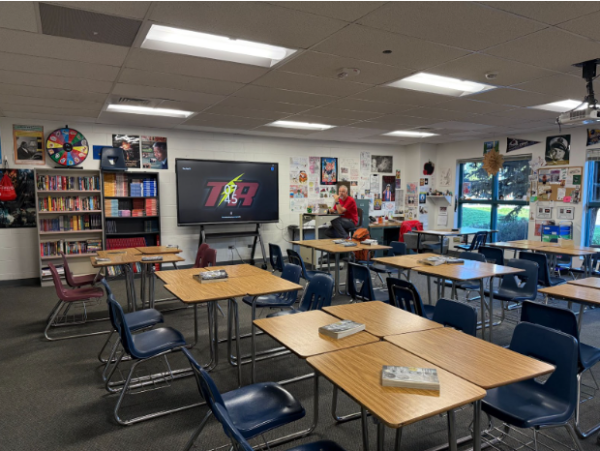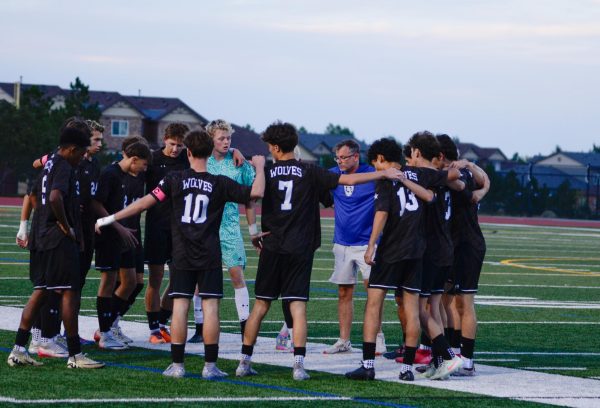Encanto: Breaking Norms and Representing Those Unseen [OPINION]
Cinderella, a poor white woman who finds a man to save her and they live happily ever after. The end.
This is the stereotypical story that America has followed for generations. Yet, throughout the 2000’s, Disney has taken a turn from these kinds of plots and is riding on a more inclusive track.
The best example of this would be Disney’s most recent movie, Encanto.
Based on Colombian culture, Encanto breaks stereotypes and norms that Disney has followed for years.
“Abre los ojos,” the first words spoken in Encanto are in Spanish, which gives a spin to the stereotypical, “Once upon a time.” This breaks the usual Disney opening and gives the average viewer a unique experience that isn’t found in American media.
Representing Columbian culture and diversity, the main family, La Familia Madrigal, is the most diverse and interesting family made by Disney yet.
The family tree starts with Abuela and Abuelo Madrigal, who are both Columbian. They have triplets and one of them has a much lighter skin tone than the other siblings. This brings real life examples of genetics and skin tone genes into an animated movie. This gives Encanto a unique realism to it, while also keeping the movie fun and entertaining for watchers.
Throughout its past movies, Disney has only had a little skin-color diversity except for the most recent movies of Coco and Princess and the Frog.
Later in the movie, the triplet with lighter skin, Peppa, marries a dark-skinned Latino, Felix. This represents the diversity of Hispanics, and how someone as light as Peppa can be just as Hispanic as Felix.
This completely revolutionized the ‘old’ Disney, and shows a concept that wouldn’t even be talked about 20 years ago.
Following along with the Madrigal Family tree, Julieta, the second triplet, has three girls who all represent different versions of feminine and masculine qualities in women.
A topic that should be recognized is the character Luisa. She is one of Julieta’s children and was given the gift of super strength. Luisa has a big frame with amazing physique, along with being the tallest character.
Luisa’s character represents masculine women who may have a deeper voice or bigger frame. This shatters Disney norms as Luisa is a more masculine approach on the typical princesses of Disney.
One of the biggest defining traits of Luisa is that she’s not looking for love, but is instead more focused on aiding the community and doing all that she can to satisfy the town with their needs.
Luisa’s character cracks the foundation and norms of all Disney princesses before her, such as skinny, white, and helpless. Luisa’s character shows women around the world that it’s an awesome quality to be strong, helpful, and independent.
Diversity is not the only aspect that sets Encanto apart from other Disney works. The other half of Encanto’s uniqueness is its story plot and message that don’t follow the typical Disney stereotypes.
In Encanto, nobody goes on an intense and strenuous journey across the world, instead, the conflict is all emotional and social.
Abuela is specifically harsh on Mirabel, the only one in the entire family that did not get a gift. Without a gift, it’s harder for her to help the community as she is just a normal person.
At the end of the movie, when Mirabel confronts Abuela, the family’s casita comes crashing down and all their belongings and home are lost. This is something that Disney really hasn’t done before in their previous movies, as the concept of broken family and confrontation is a very unique concept to this movie.
There was no evil force out for the Madrigals, nor was there any long and strenuous journey that had to be made. Encanto really shines a light on mental and social conflicts, rather than stereotypical Disney plots.
Filled with amazing diversity and fun, Encanto is one of the best movies that Disney has come out with. With a unique plot filled with amazing characters and heartfelt concepts, Encanto is a must-watch for all.

If you could have any superpower, what would it be and why?
If I could have any superpower it would be to morph into other people like Mystique from...


![Encanto: Breaking Norms and Representing Those Unseen [OPINION]](https://ghschronicle.com/wp-content/uploads/2022/01/EncantoFeatureImage.jpg)




![A Vest Won’t Protect You [OPINION]](https://ghschronicle.com/wp-content/uploads/2025/09/KoltonZuckerVestPosterOffWhite-450x600.png)
![Executive Order: Ending Radical Indoctrination in K-12 Schooling [OPINION]](https://ghschronicle.com/wp-content/uploads/2025/04/Screenshot-2025-04-23-at-2.51.41 PM-600x337.png)



